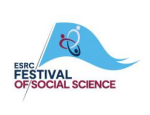Rutherford’s practice-based research explores the ability of photography to document scenes and events that did not exist ‘out there’ in the world – but were created by the act of photographing them.
* * *
In my previous photographic projects (1982- to present), I have explored the various ways in which the medium can be invited to provide an ‘unanticipatable’ contribution to the resulting artwork. I have done this mostly through photography, but an earlier project (Word processing as an act of collaboration) explored the use of word processing software to generate texts.
My current photographic project explores the ability of the camera to document scenes and events that did not exist ‘out there’ in the world – but were created by the act of photographing them. The works in this series are all ‘straight’ photographs. While in some cases, I have adjusted the brightness and contrast of the original files, these images have not been otherwise manipulated or ‘Photoshopped’. This project developed through three phases:
The first phase Submarines exploited the combination of two factors: i) the reflective-refractive properties of water and ii) the way in which the monocular view of the camera interprets and renders the effect of these reflective-refractive properties on the appearance of those who agreed to undergo the ordeal of posing for me. As a consequence of the constant motion of the water and the ‘delay’ in the release of the shutter of the digital camera, it was not possible to determine the composition of the frame or to anticipate or choose with intent the ‘moments’ recorded, these photographs were the result of an active (an act of) collaboration between photographer and the medium of photography.

In the second phase of the project Supermarines, I held a waterproof camera below the surface and pointed it upwards (diagonally) through the surface of the water towards figures whose heads and torsos were above the surface of the water.
In addition to the factors of the previous Submarines series (in which the camera position, the constant changes in the surface texture of the water and the delay in the release of the shutter made it impossible to determine the composition of the frame or choose with intent how the figures would be rendered or depicted), as a result of holding the camera underwater, I was unable even to predict with any certainty what elements might be in the frame when, following the delay, the shutter released.

In the most recent phase, Technical Images of Flux, my starting point was the observation by Flusser:
The world reflects the sun’s and other rays which are captured by means of optical, chemical and mechanical [digital] devices on sensitive surfaces and as a result produce technical images, i.e. they appear to be on the same level of reality as their significance. […] This apparently non-symbolic, objective character of technical images leads whoever looks at them to see them not as images but as windows. Wilém Flusser. Towards a Philosophy of Photography. (Flusser, 1983)
As argued in my article Is This Photograph Taken?, the assumptions which follow from the widely accepted conception of photographs as “windows” which provide an “accurate and objective record” (Genoni 2002: 137) and “a truthful account” (Fosdick and Fahmy, 2007: 1) of the world ‘out there’ hinder our ability to imagine the possibility of an active (or, an act of) collaboration between the medium and photographer.
In an effort to reduce further my conscious control over the final result, rather than photograph those people willing to pose for me, I began to point the camera (which was still underwater) in the general direction of people I passed in the water, as well as nearby buildings, clouds and other features.

In an effort to reduce further my conscious control over the final result, rather than photograph those people willing to pose for me, I began to point the camera (which was still underwater) in the general direction of people I passed in the water, as well as nearby buildings, clouds and other features.
For more information, please contact Rutherford (Programme Leader – MA Advertising, Faculty of Media and Communication).
Previous projects and articles can be found on Rutherford’s website: http://www.theshadowofthephotographer.co.uk/











 ESRC Festival of Social Science 2025 – Reflecting back and looking ahead to 2026
ESRC Festival of Social Science 2025 – Reflecting back and looking ahead to 2026 3C Event: Research Culture, Community & Cookies – Tuesday 13 January 10-11am
3C Event: Research Culture, Community & Cookies – Tuesday 13 January 10-11am Dr. Chloe Casey on Sky News
Dr. Chloe Casey on Sky News Final Bournemouth University publication of 2025
Final Bournemouth University publication of 2025 On Christmas Day in the Morning…
On Christmas Day in the Morning… ECR Funding Open Call: Research Culture & Community Grant – Application Deadline Friday 12 December
ECR Funding Open Call: Research Culture & Community Grant – Application Deadline Friday 12 December MSCA Postdoctoral Fellowships 2025 Call
MSCA Postdoctoral Fellowships 2025 Call ERC Advanced Grant 2025 Webinar
ERC Advanced Grant 2025 Webinar Horizon Europe Work Programme 2025 Published
Horizon Europe Work Programme 2025 Published Update on UKRO services
Update on UKRO services European research project exploring use of ‘virtual twins’ to better manage metabolic associated fatty liver disease
European research project exploring use of ‘virtual twins’ to better manage metabolic associated fatty liver disease